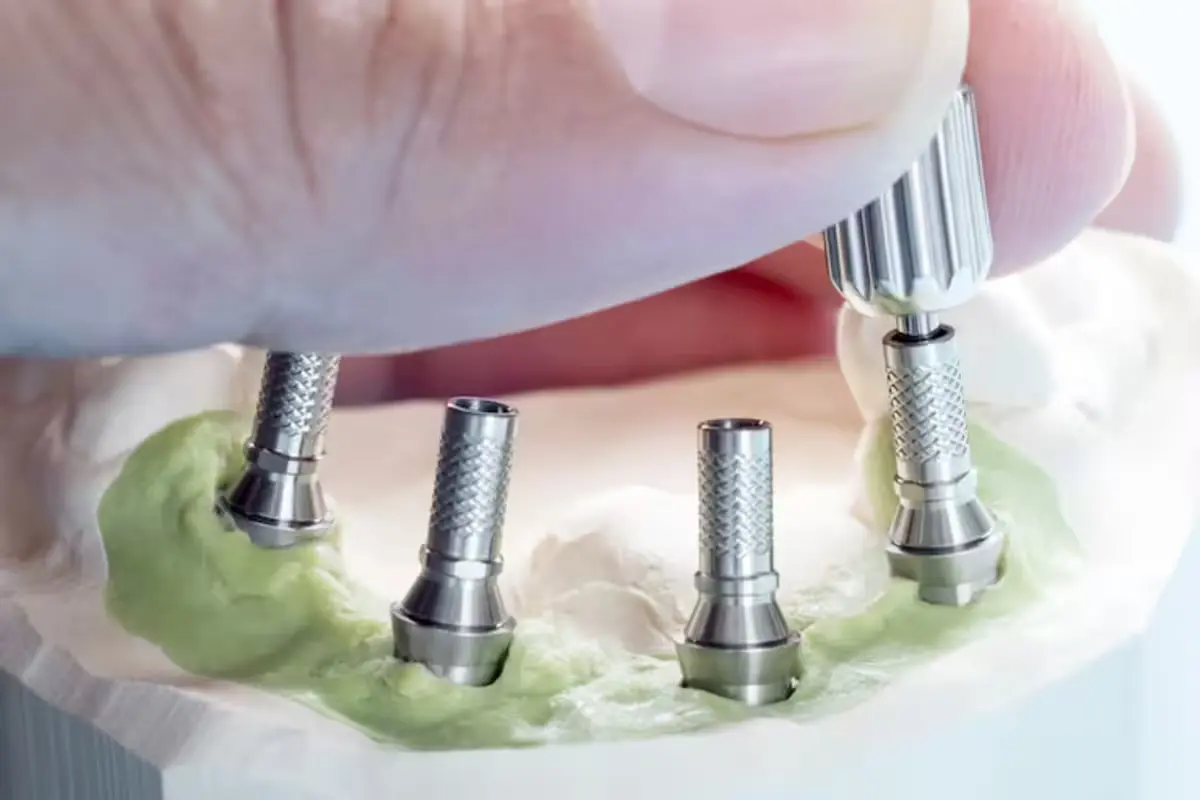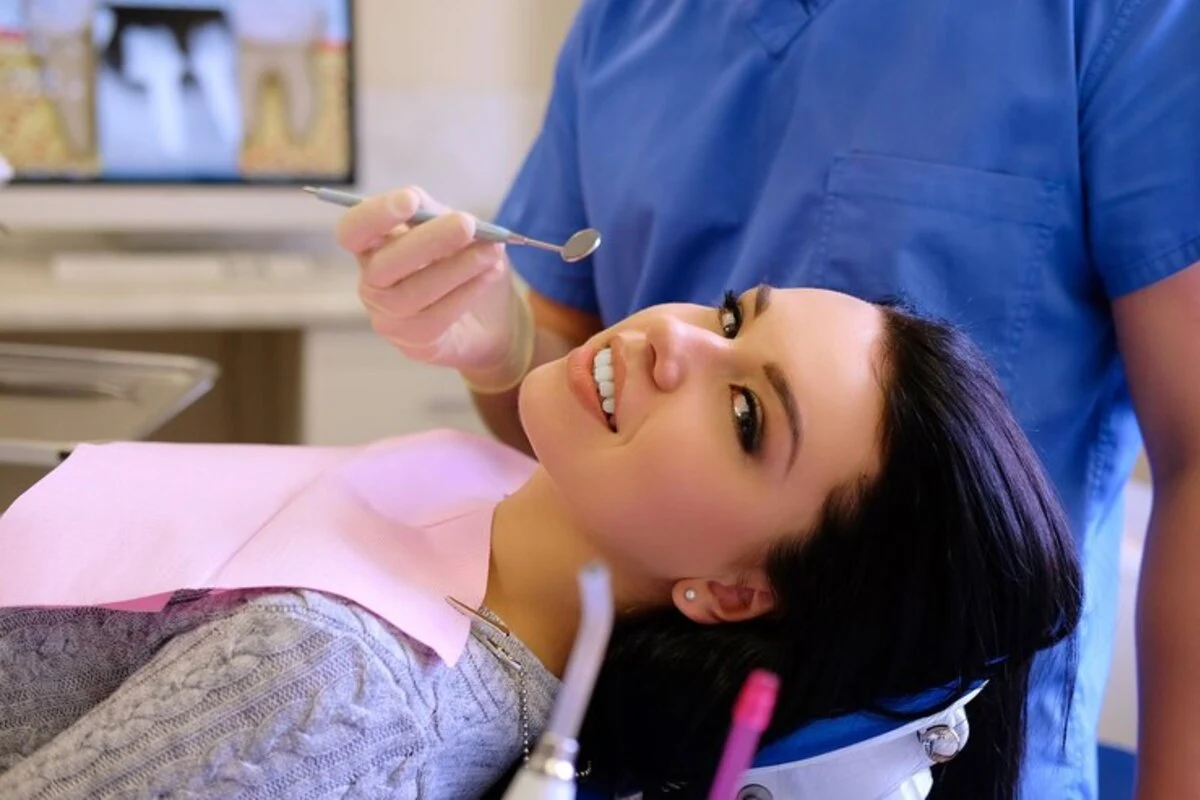The field of dental implantology has witnessed remarkable advancements over the years, transforming patient care and outcomes significantly.
These innovations have made dental implants more efficient, safer, and more accessible, offering patients better aesthetics, functionality, and overall satisfaction.
The continuous evolution in dental implant techniques is driven by the need to address complex dental issues with minimally invasive procedures, enhance osseointegration for long-term success, and reduce patient recovery times.
Introduction to Advances in Dental Implant Techniques
Recent breakthroughs, such as the application of ultraviolet (UV) light to improve osseointegration and the development of smart implants, highlight the industry’s move towards integrating cutting-edge technology in dental care.
These advancements are not just about improving the mechanical aspects of dental implants but also about ensuring that the procedures are patient-friendly, reducing the discomfort and anxiety associated with dental surgeries.
Moreover, the adoption of digital dentistry has revolutionized the planning and execution of dental implant procedures, allowing for precise implant placement and the customization of implants to fit the unique anatomy of each patient’s oral cavity.
The push towards immediate loading implants and innovations in materials, such as the use of zirconia over traditional titanium, reflects a broader trend towards improving the quality and longevity of dental implants.
This article which is written by Fortunesmilesdental clinic, aims to explore these advancements in detail, shedding light on how they contribute to the ever-improving field of dental implantology and what they mean for the future of dental care. From UV light-enhanced osseointegration to the simplification of sinus bump techniques and the rise of minimally invasive procedures, we delve into the latest trends that are setting new standards in dental implant treatments.
UV Light Enhanced Osseointegration
A groundbreaking technology developed by researchers at the UCLA School of Dentistry, led by Dr. Takahiro Ogawa, has marked a significant milestone in dental implantology.
This innovative approach involves a one-minute ultraviolet (UV) light treatment of titanium implants right before the implantation procedure. This technique has been shown to ensure near-perfect osseointegration, accelerate healing times, and significantly reduce complications for patients.
Osseointegration, the process by which a dental implant becomes firmly attached to the jawbone, is crucial for the success of the implant. Traditional methods have faced challenges with hydrocarbons naturally deposited on titanium implants, hindering this critical process and leading to higher rates of peri-implantitis. Dr. Ogawa’s team discovered that a brief exposure to UV light effectively removes these hydrocarbons, thereby enhancing the implant’s bone-binding capabilities and reducing bacterial susceptibility by 60% compared to untreated implants.
This UV treatment has been a game-changer in dental implantology, doubling the anchoring strength of implants and making them suitable for a wider range of patients, including those traditionally considered at risk, such as aging individuals, smokers, and patients with diabetes or osteoporosis.

The UV-treated implants show nearly 100% bone integration, which is a substantial improvement over previous methods.
Furthermore, the application of UV light treatment has broader implications beyond dental care. Its potential use in orthopedic implants, like hip joint reconstructions and spine fixations, could significantly reduce the incidence of revision surgery and complications, showcasing the versatile benefits of this technology across different medical fields.
This advancement not only signifies a leap forward in the materials science aspect of dental implants but also highlights the importance of interdisciplinary research in developing solutions that can improve patient outcomes in dental care and beyond.
Trends in Dental Implant Technology
The landscape of dental implant technology has evolved remarkably, driven by technological advancements and increasing demands for improved dental care. As we delve into the current trends shaping the future of dental implants, several key developments stand out, highlighting the industry’s progress towards more innovative, efficient, and patient-centric solutions.
-
Rising Popularity of Dental Implants:
Dental implants have become the preferred solution for tooth replacement, with millions of procedures conducted annually. This surge in popularity is attributed to their durability, natural appearance, and the ability to preserve the integrity of facial structures.
-
Growth of the Implant Industry:
The dental implant sector is experiencing rapid growth, with projections suggesting a significant increase in market size. This expansion is fueled by advancements in implant technology, an aging population, and a higher incidence of dental disorders.
-
Material and Design Innovations:
While titanium remains a standard material for implants due to its durability and biocompatibility, new materials like zirconia and tantalum oxide are being explored for their aesthetic and physical properties. Additionally, the design of implants is being refined to enhance osseointegration and patient comfort.
-
Antibacterial Coatings:
To combat the risk of infections, which can compromise the success of dental implants, researchers are developing antibacterial coatings. These coatings are designed to prevent bacterial growth, ensuring the long-term stability and health of the implant site.
-
Advancements in 3D Printing:
The adoption of 3D printing technology in dental implantology allows for the customization of implants to fit the unique anatomy of each patient’s mouth. This not only improves the fit and function of the implants but also significantly reduces the time required for their production and placement.
-
Computer-guided Surgical Techniques:
The integration of computer-guided surgical advancements into dental implant procedures has enhanced the precision of implant placement. These techniques, supported by detailed imaging and planning software, help minimize surgical errors and improve outcomes for patients.
These trends underscore a significant shift towards personalized dental care, where the focus is on achieving optimal results through precision, innovation, and a deep understanding of patient needs. As technology continues to advance, the future of dental implants looks promising, with even more groundbreaking developments on the horizon.
Minimally Invasive Sinus Bump Techniques
The evolution of sinus bump techniques in dental implantology illustrates a significant advancement towards minimizing patient discomfort and reducing recovery times. Traditionally, procedures involving the sinus, especially for patients with insufficient bone height in the upper jaw, required extensive surgery. However, recent innovations have led to the development of minimally invasive techniques that simplify the process and enhance clinical efficiency.

Simplification and Efficiency: Modern sinus bump techniques now incorporate simplified drilling protocols that, when combined with self-drilling aspects of the implant body, allow for efficient and less invasive treatment of the sinus area.
This approach is particularly beneficial for cases with sufficient bone below the sinus, where bone condensation and self-drilling can be employed to improve bone density and achieve successful implantation without extensive grafting.
Read it: Advances in Dental Crown Techniques
Advancements in Implant Design: The design of sinus-friendly implants has also evolved, featuring attributes such as a tapered end to prevent over-insertion into the sinus cavity and a rounded apex to safely push or reflect the sinus floor without causing damage.
These design improvements play a crucial role in simplifying sinus bump procedures and reducing technique sensitivity, making it possible to achieve primary stability in poor-density bone with minimal invasiveness.
Clinical Implications: The advancements in minimally invasive sinus bump techniques have broadened the treatment options for patients with atrophic maxillary ridges, offering a viable solution even in cases with significantly reduced bone height.
By enabling efficient sinus elevation and bone augmentation with reduced operating times and less patient discomfort, these techniques represent a leap forward in dental implant surgery.
These minimally invasive sinus bump techniques, supported by the latest in implant design and drilling protocols, not only enhance the predictability and success rates of dental implants but also significantly improve the patient experience.
By reducing the need for extensive surgical interventions, patients can benefit from faster recovery times and lower risks of complications, marking a significant advancement in the field of implantology.
Innovations in Implant Materials and Immediate Loading
The advancements in dental implant materials and the concept of immediate loading have significantly enhanced the efficiency and effectiveness of dental treatments, offering patients improved experiences and outcomes.
Digital Dentistry and Guided Implant Placement: The integration of digital technologies in dental practices has revolutionized the approach to implant placement.
With the aid of digital scans, dentists can now create a virtual model of the patient’s oral cavity, allowing for the precise design and fabrication of implants. This process ensures a perfect fit and seamless integration with the patient’s unique oral anatomy, significantly improving the success rates of implant surgeries.
Immediate Loading: A remarkable advancement in dental implantology is the ability to immediately load the implants. This technique enables the placement of a temporary, functional tooth at the time of surgery, dramatically reducing the overall treatment time and allowing patients to enjoy the benefits of their implants without the long wait traditionally associated with osseointegration.
Immediate loading has transformed patient care by minimizing the number of surgical interventions and significantly shortening the recovery period.
Zirconia Implants: Zirconia has emerged as a popular alternative to titanium for dental implants. Its biocompatibility, along with its tooth-like color and antimicrobial properties, makes it an attractive option for patients and clinicians alike. Zirconia implants are particularly beneficial for patients with metal sensitivities or those looking for a more natural-looking restoration.
Read it: FULL MOUTH RECONSTRUCTION
Smart Implants: The development of smart implants, equipped with sensors to monitor various health indicators in real time, represents a leap forward in personalized dental care. These implants can track osseointegration progress, bite force, and the health of the implant, providing valuable data that can help in the early detection of potential issues and allowing for timely interventions.
All-on-4 Dental Implants: The All-on-4 technique is another significant innovation, enabling the replacement of an entire arch of teeth with just four implants. This method is not only less invasive but also offers a quicker recovery time and is a cost-effective solution for patients with extensive tooth loss or significant bone degradation.
These innovations in dental implant materials and techniques reflect the dynamic nature of dental science, focusing on improving patient experiences and outcomes. As research and technology continue to advance, the future of dental implantology promises even more exciting developments, further transforming the landscape of dental care.
Conclusion: The Future of Dental Implants
As we look towards the future of dental implants, it’s clear that the field is on the brink of even more transformative advancements. The innovations we’ve discussed—ranging from UV light-enhanced osseointegration to smart implant technologies—underscore a trend towards procedures that are not only more efficient and effective but also increasingly centered on patient comfort and outcomes.
The integration of digital dentistry has already begun to reshape the landscape of implantology, making procedures more precise and predictable. With continued advancements in 3D printing and computer-aided design, the customization of implants to meet the unique anatomical requirements of each patient will become standard practice, further improving success rates and patient satisfaction.
Materials science, too, is evolving, with newer materials like zirconia offering alternatives to traditional titanium implants. These materials promise not only to enhance the aesthetic outcomes of implant procedures but also to improve biocompatibility and reduce the risk of complications.
As research into these materials continues, we can expect to see implants that are even more closely matched to natural tooth function and appearance.
Moreover, the concept of smart implants is poised to revolutionize patient care, offering real-time monitoring of implant health and facilitating early detection and intervention for potential issues. This could significantly extend the lifespan of dental implants and reduce the need for revision surgeries.
The All-on-4 technique and similar innovations are making dental implants accessible to a wider audience, including those who previously might not have been considered candidates for implant surgery due to extensive bone loss or other complicating factors.
As techniques continue to evolve, we can anticipate even less invasive procedures with quicker recovery times and improved overall outcomes.
In conclusion, the future of dental implants is bright, with ongoing innovations poised to enhance every aspect of implantology. From surgical techniques and materials to post-operative care and monitoring, these advances promise to deliver better dental health outcomes and improve the quality of life for millions of patients worldwide.
As we continue to embrace these changes, the field of dental implantology will undoubtedly play a pivotal role in the broader landscape of healthcare, demonstrating the incredible potential of modern dentistry to address complex challenges and meet the needs of patients in the 21st century and beyond.

